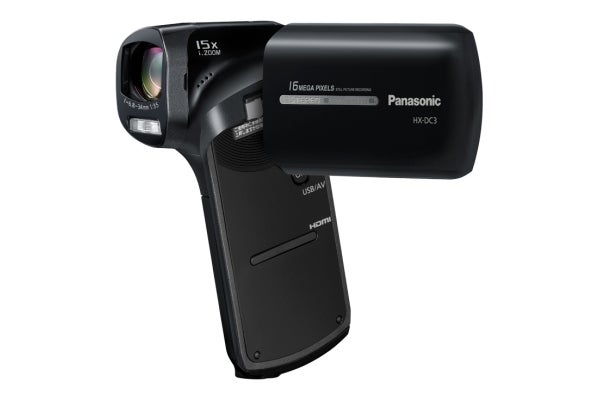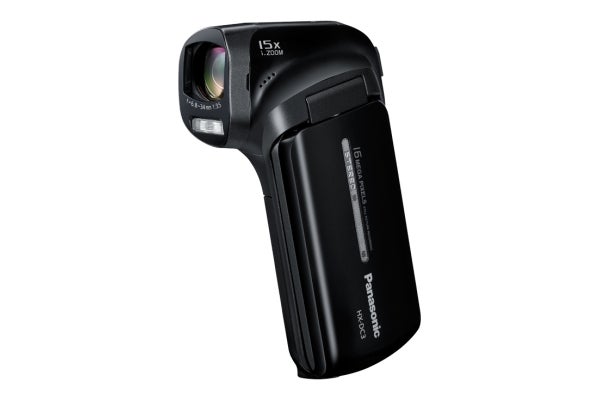Panasonic HX-DC3 Review
Panasonic HX-DC3
Panasonic's HX-DC3 provides a decent optical zoom and manual settings for a very keen price.

Sections
- Page 1 Panasonic HX-DC3 Review
- Page 2 Controls, Image Quality and Verdict Review
Verdict
Pros
- Decent image quality
- Very good price
- Optical zoom
Cons
- Limited manual settings
- Mediocre in low light
Key Specifications
- Review Price: £124.97
- 1/2.33-inch CMOS with 14.4Mpixels
- 6x optical zoom; 15x iZoom
- Electronic Image Stabilisation with Active Mode
- 1080/60i MP4 format at up to 17Mbits/sec
- Creative effects
What is the Panasonic HX-DC3?
The Panasonic HX-DC3 is a budget-conscious pistol-grip camcorder. Now that the candy-bar format furore caused by the Flip has died down, since the company was closed by Cisco about 18 months ago, the pistol grip format has grown in prominence instead. Taking up not much more space than a candy-bar camcorder, a pistol grip model can offer some extra features that make it more flexible for shooting video.
Panasonic HX-DC3: Features
There, is of course, an increasingly large question mark over budget camcorders, now that mobile phones are acquiring better and better camera abilities. This was clearly why the Flip had such a short lifespan – just four years. So a budget camcorder needs to offer features that are beyond a smartphone, whilst still being priced at a level well below a more fully featured model.
The first area where the Panasonic HX-DC3 fits these requirements is in its sensor. The candy-bar format made its name by punching above its price in low light, and the DC3’s 1/2.33-inch CMOS holds a similar promise. The sensor sports 14.4Mpixels, too, so has a higher resolution at its disposal than the average smartphone, with a few exceptions like the recently released Nokia Lumia 1020.
The sensor allows the DC3 to grab still images at up to 4,608 x 3,456 (16Mpixels) alongside Full HD video. When shooting video, the Panasonic HX-DC3 offers a variety of formats, with the top ones being 1,920 x 1,080 at either 60 interlaced fields or 30 progressive frames per second. You can also grab 720p video at either 60 or 30 frames per second, plus iFrame (960 x 540) and VGA at 30 progressive frames per second.
There’s an audio-only voice recorder option, too, should you want to use the DC3 as a Dictaphone. It should be noted that there is no option to switch the recording base frame rate to a PAL-friendly 25 frames per second, but this is increasingly unimportant now that most TVs can handle 30 frames per second, and you are more likely to be uploading your video to the Internet than burning it to disc.
The DC3 offers a full-sized SD card slot with SDXC compatibility for recording footage, although there is a tiny 65MB of storage on the camcorder itself. High definition footage is recorded at up to 17Mbits/sec, and iFrame uses an even greater 24Mbits/sec, but it’s not possible to configure different data rates for these settings. Each resolution has a single data rate associated with it. A 16GB card will be enough for around two hours of footage at the 1080/60i setting, and the slot is Eye-Fi compatible, allowing you to hook the camcorder up to Wi-Fi.
Another area where the DC3 beats smartphones and candy-bar camcorders hands down is with its optical zoom, which is listed as 5x but extends to 6x in practice. Almost no smartphones offer this facility, with the notable exception of the Samsung Galaxy S4 Zoom. Digital zooms artificially blow up the image to achieve their effect, so reduce resolution, whereas an optical zoom preserves this. You will be able to zoom into the subject without ugly blockiness appearing.


